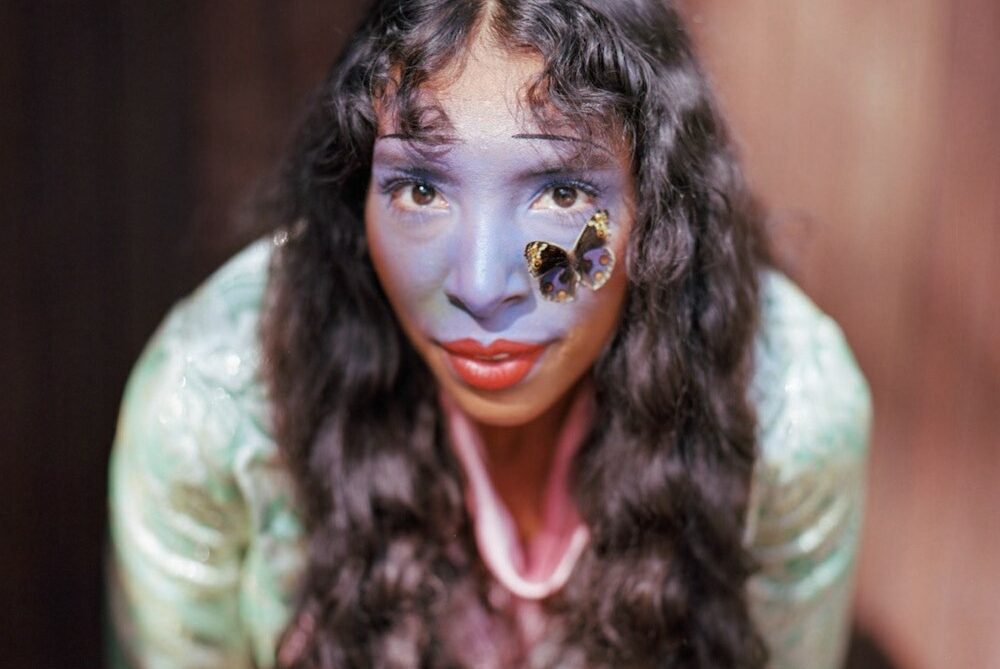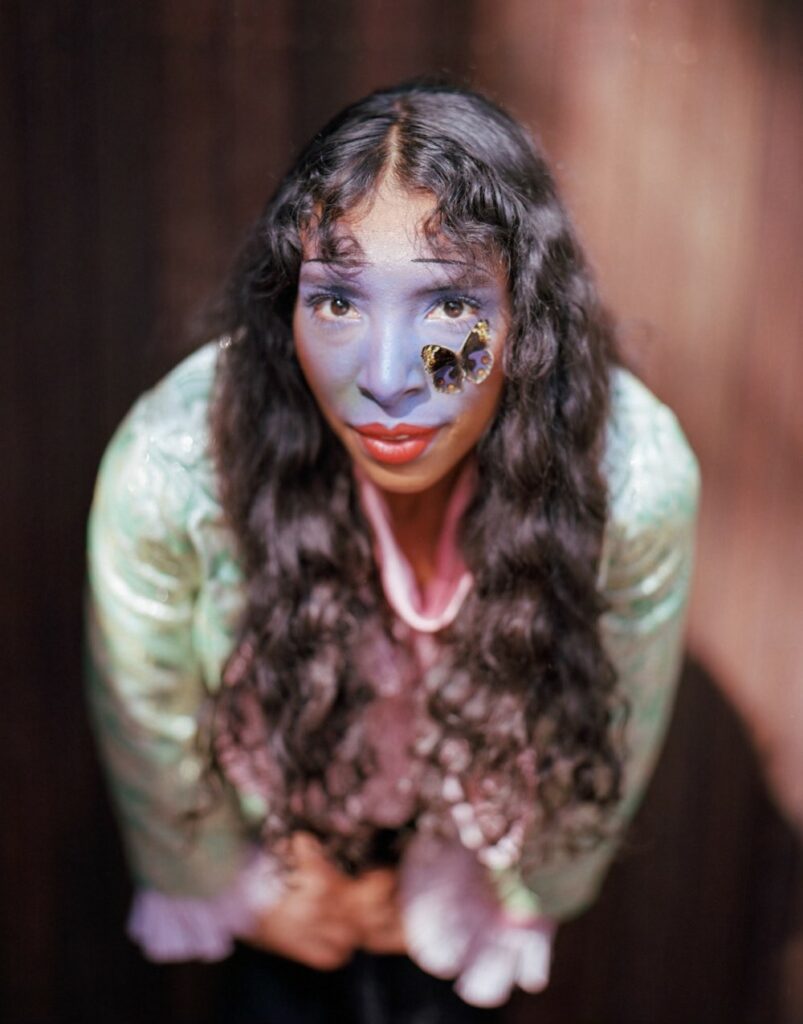SPELLLING is a Conduit of the Divine on Orchestral Pop Concept LP The Turning Wheel


“It’s never just a love song.”
So says Chrystia Cabral, the Bay Area-based creative lifeblood behind the critically acclaimed experimental pop project SPELLLING, of what drives her songwriting. “I’m always striving to insert these spiritual questions because that’s what fascinates me to make music,” she adds. On June 25, she released her third full-length album, The Turning Wheel, via Sacred Bones.
Known for her sparse, synth-based musical aesthetic and repetitive, incantatory lyrical style, her quest for spiritual growth has informed her artistic style all the way down to the SPELLLING moniker itself. “I really love theater,” she continues. “The idea of theater, ancient Greek theater, and muses, and all that drama. I’m so into that, I really romanticize it. It goes into my project as SPELLLING, and ideas of rights and rituals and bringing that through the music.”
Thematically, the record deals primarily with “human unity, the future, divine love and the enigmatic ups and downs of being part of this carnival called life.” The title itself evokes the concept of karma, or what Cabral refers to as “the life cycle, and just accepting that reality is this constant transformation.” She had this in mind when she made the intentional creative choice to release the album as a double LP, split down the middle into stark, separate halves that serve to emulate this constant cosmic balance: “Above” and “Below.”
While Below rests on the dark and eerie tone SPELLLING is best known for, Above takes us to another dimension of Cabral’s artistry with warm, jubilant acoustic elements and pleasantly surprising, ballad-like lyricism. “When does reality stop circulating around itself? When do we reach this angelic state?” she asks, before continuing: “The Above and Below part makes sense with the mood of the songs, but also to communicate the idea of circulation, transformation, odyssey.”
The elegant collection of twelve songs builds on the bewitching synth-based sound she’s consistently refined since 2017’s Pantheon of Me, evolving in terms of lyrical complexity, sonic richness and conceptual depth. Born largely of the past year spent in isolation, these shifts all serve to signal the exponential potential of Cabral’s creative capabilities. The pandemic forced her to abandon an ambitious September 2020 release date, frustrating in the moment but ultimately a blessing in disguise for how it allowed her the time to grow artistically and transform her demos into layered narratives. “I was forced to listen deeper, and I really focused on lyric writing, and I think that’s been the greatest transformation from my previous work,” she explains. “All the songs on this record are pretty long, over three to four minutes – there’s even a seven minute song. I didn’t ever think I would be writing music this way.”
While the introspection of lockdown surely contributed to this lyrical growth, Cabral had begun to experiment in her writing for other reasons as well. When I point out the theatrical, choral expansiveness of tracks like “Always” or “Turning Wheel” on the Above half, she reveals that she wasn’t so sure about including some of these tracks on the record, so different they were from her previous work. “That song was written in mind for someone else. I was starting to experiment – I love songwriting, and what about later in my career, what if I wanted to write for other people? Over the summer, alongside working on The Turning Wheel, I was writing songs for other people, like hypothetical other people,” she says. “I started writing ‘Always,’ and I’m like, okay, this is not something I would sing, but I just went with it, and then I got so attached to it, and I was like, well, who else is gonna sing it? I have to.”
She explains that when she writes, she imagines the song as the soundtrack to a scene in a movie. “I try to not get in the way of what the song wants to do, and not insert myself. It helps me to start to create a story in my mind,” she says. “With ‘Turning Wheel,’ the first note I [struck] on the piano, it definitely felt like it was striking something kind of musical, like The Sound of Music or something like that. I just ran with that and that song ended up being about the urge to escape, like leaving the city and living away from all the concerns and demands of living in the city.”
In addition to growing in her songwriting, Cabral took on the ambitious and unprecedented challenge of collaborating with an ensemble of 31 musicians, which helped to build the album’s orchestral hugeness. The resulting record defies categorization. It combines elements of her unique influences, ranging from soul to psych to pop to noise. Ultimately they coalesce into something else, an eclectic auditory adventure that seems to channel the divine. Having written her previous two records almost entirely on her own with just a synth, this fell way outside her creative comfort zone. “Personally I’m a really introverted person, so this process took a lot of courage. It was a big challenge for my personality,” she shares. She notes with humor the irony of taking on such a task right as this period of isolation began, and reveals that the additional challenge of having to conduct so many of these collaborations remotely over Zoom was both a blessing and a curse.
“It was a lot of back and forth, and that became so hard, where I was like okay, I don’t know if this is gonna happen the way that I envisioned it, which was this ‘in the moment’ kind of thing where we can all be together and improvise, so I had to let go of that and just work with this new mode,” she explains. Ultimately, though, “it kind of played to my strengths where I could work with people more one on one instead of this huge orchestration of people in the same room together, so I’m really happy with how that came together,” she says.
As she begins the preparations for a live show to accompany the songs, she is exploring how to play with interpretive movement and conceptual art as a way to deepen the thematic experience, citing fellow Sacred Bones artist Jenny Hval as a specific inspiration. Incorporating this exploration of conceptual art into both the live show and the structural organization of the album itself adds another layer of beauty to an already beautiful record, surprising in the depths of its complexity. But then again, with SPELLLING, it’s never just a love song.
Follow SPELLLING on Instagram for ongoing updates.

